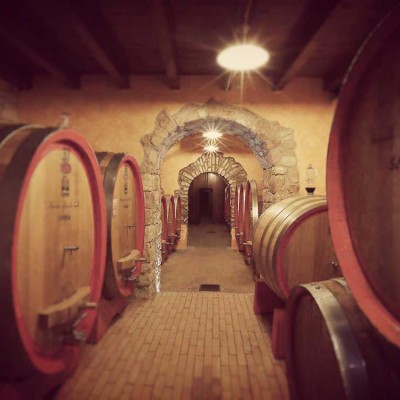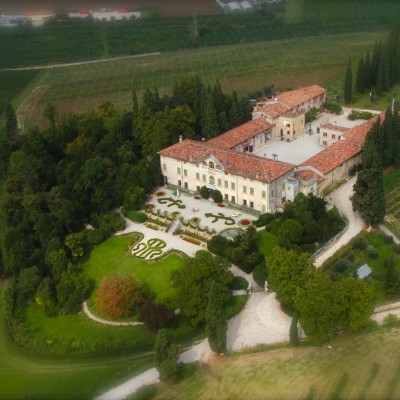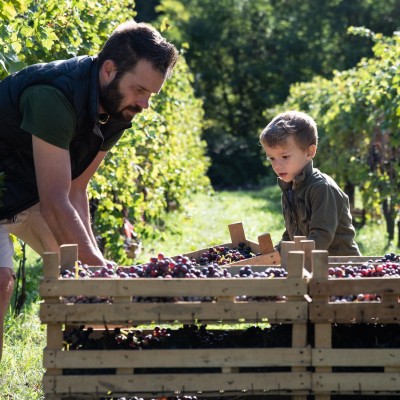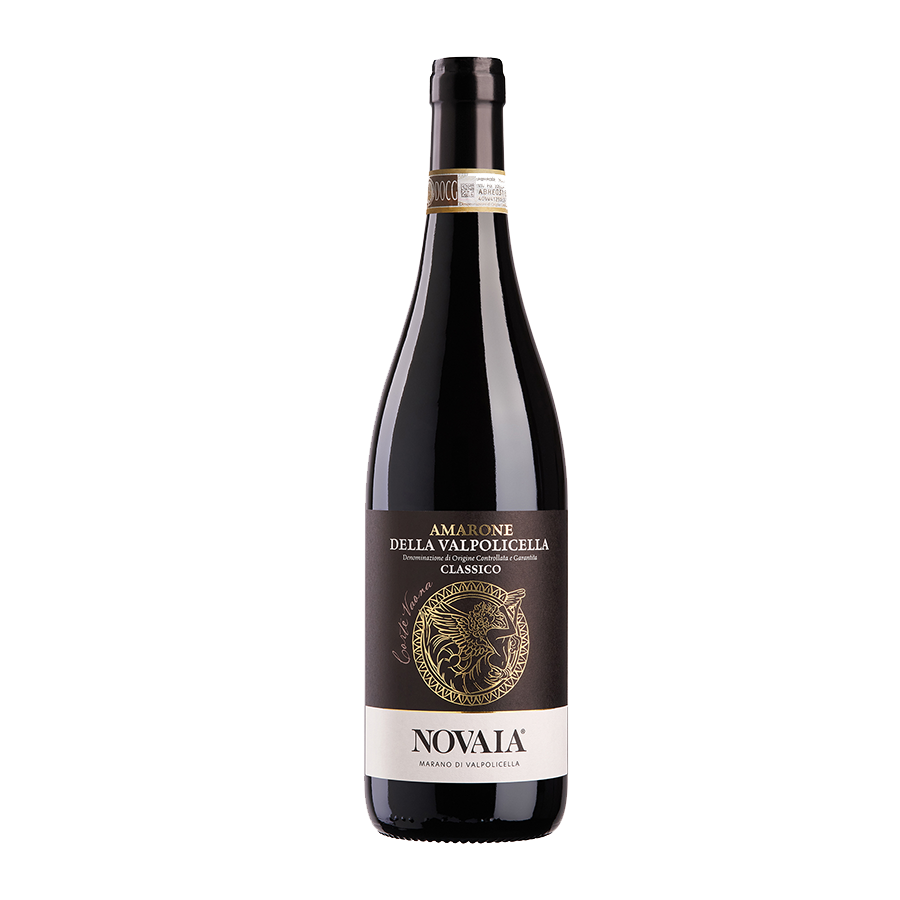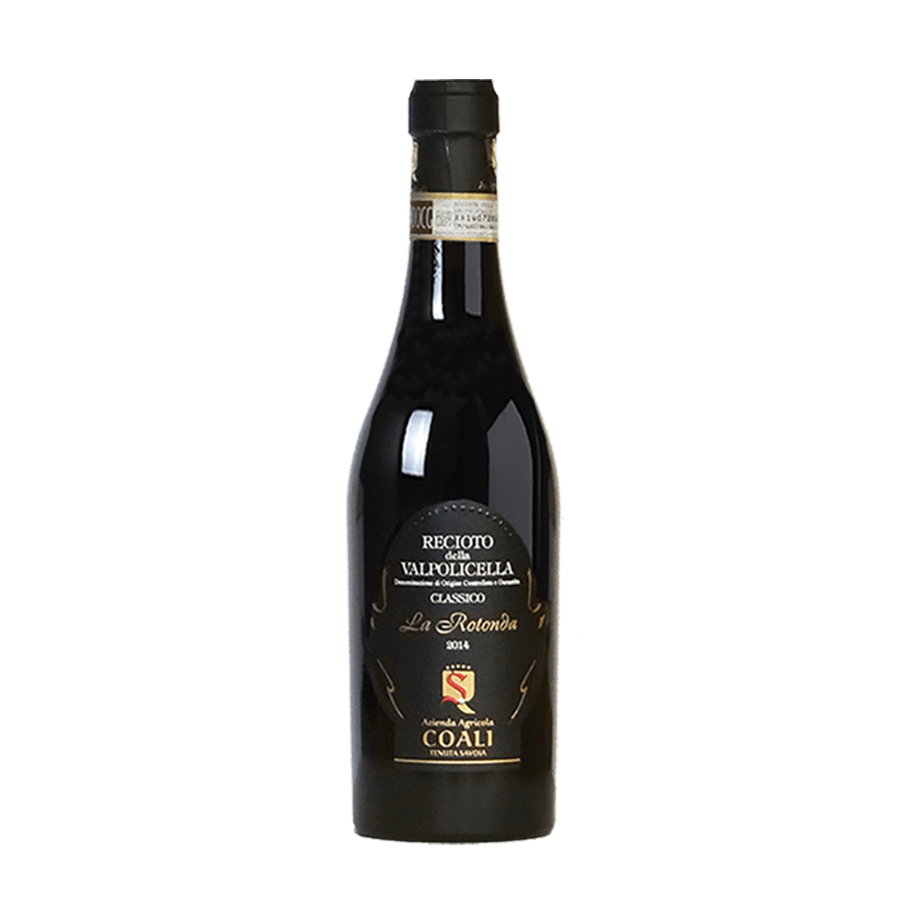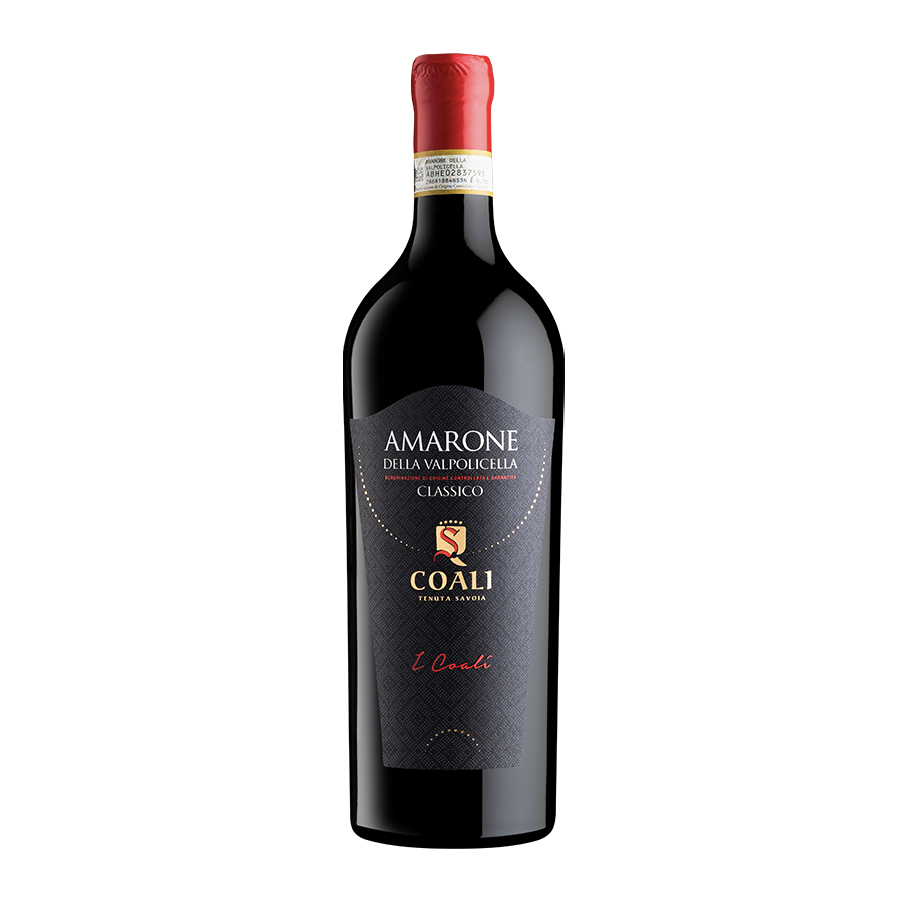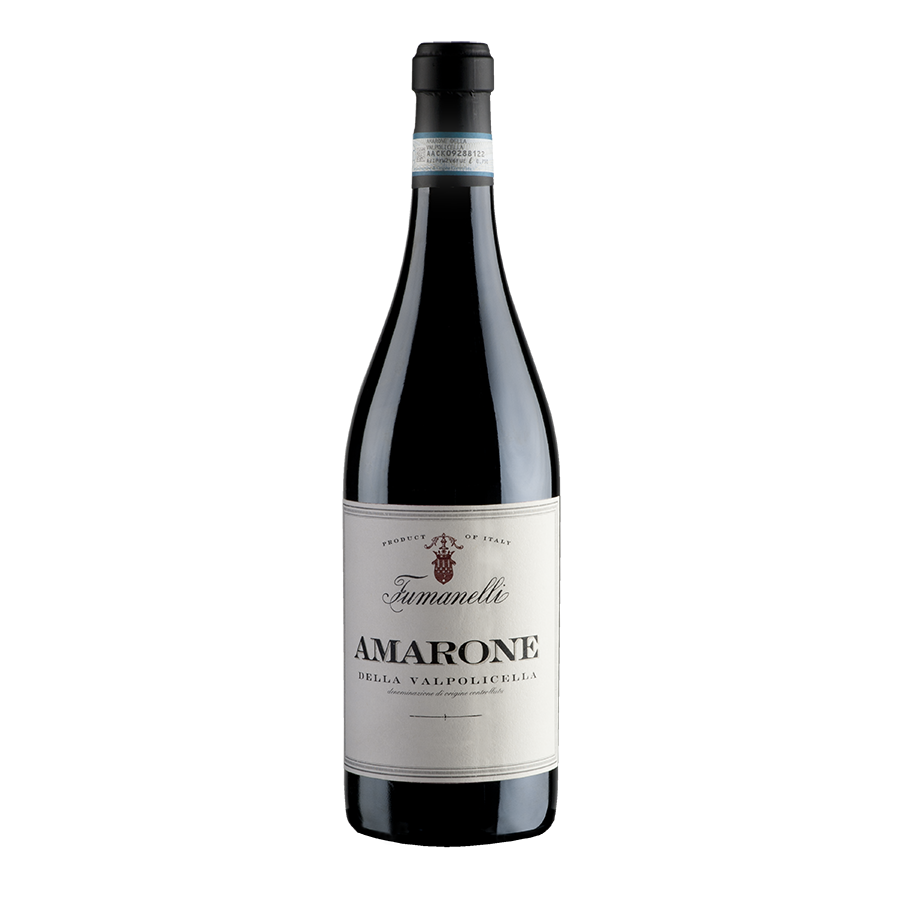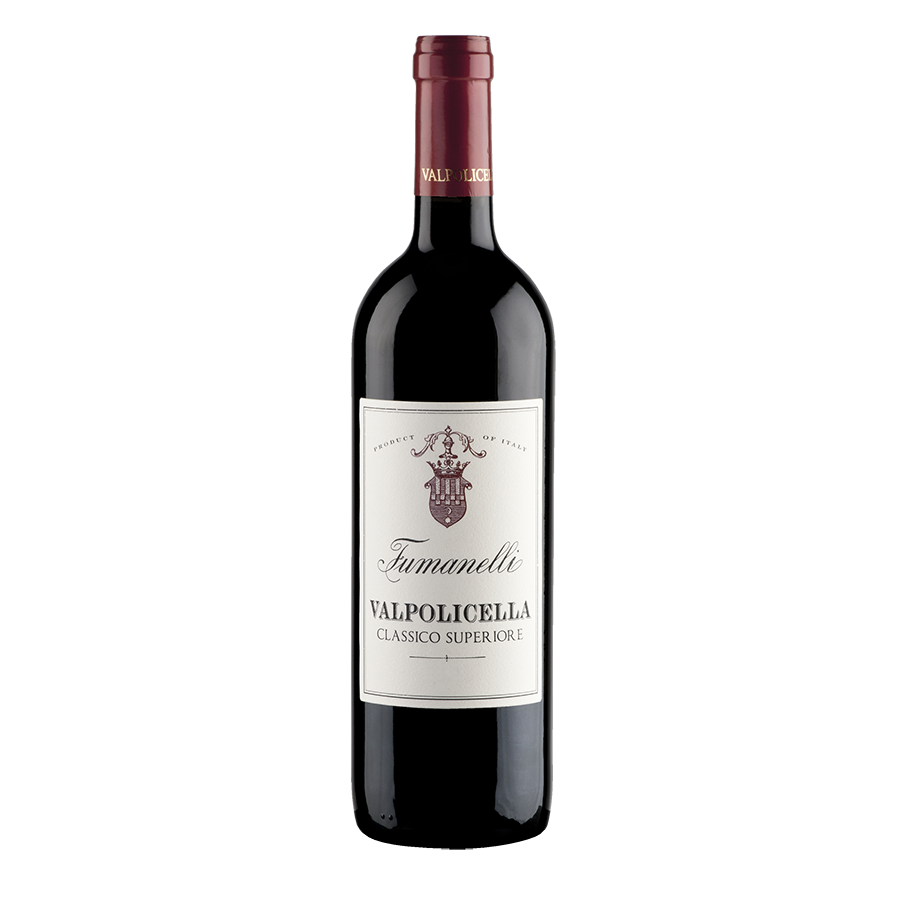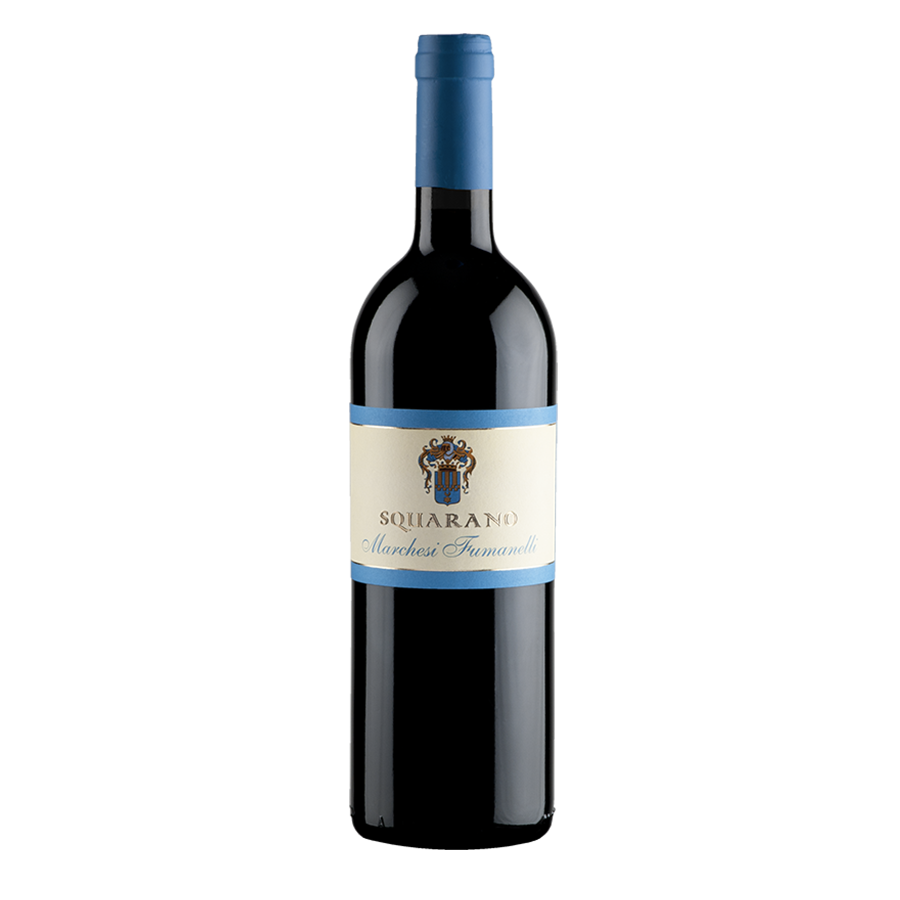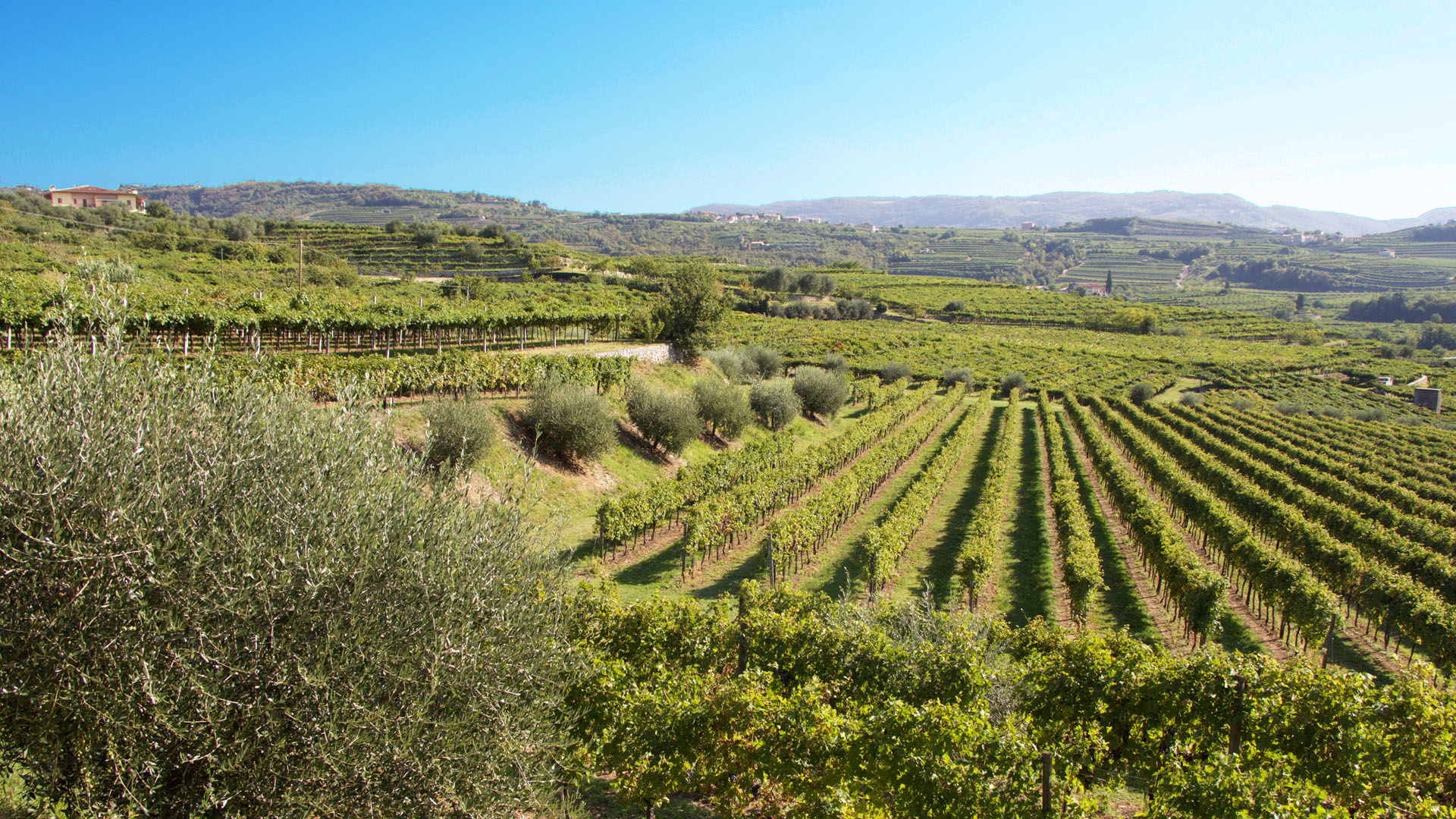
Valpolicella
Valpolicella is the most ancient area of wine production in Italy, and one of the most important ones, too. Here, wine continues to be created by blending ancient wisdom and modern techniques, using autochthonous vines such as Corvina (purple, thick-skinned grapes with light tannins, hints of cherry and plum), Corvinone (dark blue, large grapes in a pyramid-shaped bunch, used as a reinforcement of Corvina, with light tannins and a complex aromatic spectrum), Rondinella (as dark as the feathers of a swallow, “rondine”, it’s probably the most widespread vine in Valpolicella), Oseleta (thick-skinned grapes with good tannins, grouped in small bunches that look like small birds, whence its name from the dialectal term for “bird”) and Molinara (light coloured, with a very waxy dust, so much that the grapes seem almost coated in flour coming from a mill — in dialect, “molino”).
This great variety of vines grows in different parcels on diverse altitudes throughout the valleys: when blended together, they give life to wines with unique and fascinating variations of aromas and flavours.
“Dry, red and cordial, like the home of a brother one gets on with” — these are the words Ernest Hemingway used to describe a glass of Valpolicella, a wine he famously loved. This area is the birthplace of Valpolicella DOC (= controlled designation of origin), Valpolicella Superiore DOC, Valpolicella Ripasso DOC, Amarone della Valpolicella DOCG (= controlled and guaranteed designation of origin) and Recioto della Valpolicella DOCG; the label “Classico” can be added to those wines produced inside the ancient traditional areas, comprising the five original communities of Sant’Ambrogio, Fumane, San Pietro in Cariano, Marano and Negrar.
The whole area of production is of 8.398 hectars and it includes not only the 5 municipalities of Valpolicella Classica but also the zone of Valpantena - east of Valpolicella Classica- close to Verona city center and the DOC Region with Valle di Mezzane, Val d’Illasi and Valle di Cazzano di Tramigna.
While Valpolicella DOC and Valpolicella Superiore DOC are produced using fresh grapes, our other wines rise out of an ancient Mediterranean winemaking tradition: making wine using raisined grapes, an ingenious way to create a stronger wine and to get more complex and intense flavours. This tecnique is called “Appassimento”.
The grapes selected for Recioto — a sweet red wine, considered the ancestor of the Amarone — usually come from vineyards with a southwestern exposure, where they are able to develop a higher sugar content, while those selected for Amarone — probably the best known wine of this area — come from parcels with an eastern exposure, where the grapes are allowed to ripe slowly, in order to get the perfect balance necessary for the finest of wines.
Valpolicella with its sinuous hills, breath-taking views, and green vineyards, is a land of wineries, olive groves, and of history. If you are looking for ancient monuments and architecture, you are spoiled for choice. Among the many sites that can be visited in the Classic Zone we mention the roman temple of Minerva, the Church of San Giorgio, one of the most ancient places of worship of the territory, that is still in use and the beautiful Renaissance venues.
Every step of the way, you will get to know more and more about our beautiful land: our guides can’t wait to introduce you to all of its beauties and tastes! Just book one of our wine tasting tours and be prepared to feast your eyes on the scenery and to amaze your senses with our amazing Valpolicella wines!







